Abstract
Four studies were conducted to investigate the source of reinforcement of Sidman avoidance. First it was found that the acquisition of avoidance was seriously impaired if there was no immediate stimulus consequence of responding, i.e., proprioceptive and auditory feedback. The second study showed that if the shock-shock interval was split so that only responses occurring in one half of the interval were effective in postponing shock, then learning was impaired. It made little difference which half of the interval was used. The third study demonstrated that Ss learn Sidman avoidance more quickly with a variable shock-shock interval than with the usual fixed-interval procedure. The results of the second and third experiments argue against the view that avoidance is reinforced by the decrease in conditioned aversiveness that occurs at long post-shock times. The final experiment indicated that Ss do not learn Sidman avoidance if the response-produced delay of shock is preceded by a shock, hence it seems unlikely that the crucial source of reinforcement is merely an overall reduction in shock density. All of the findings are consistent with the hypothesis that the avoidance response is reinforced by the decrease in conditioned aversiveness of stimuli at short post-response times. This seems to be the case even at the beginning of acquisition.
Full text
PDF
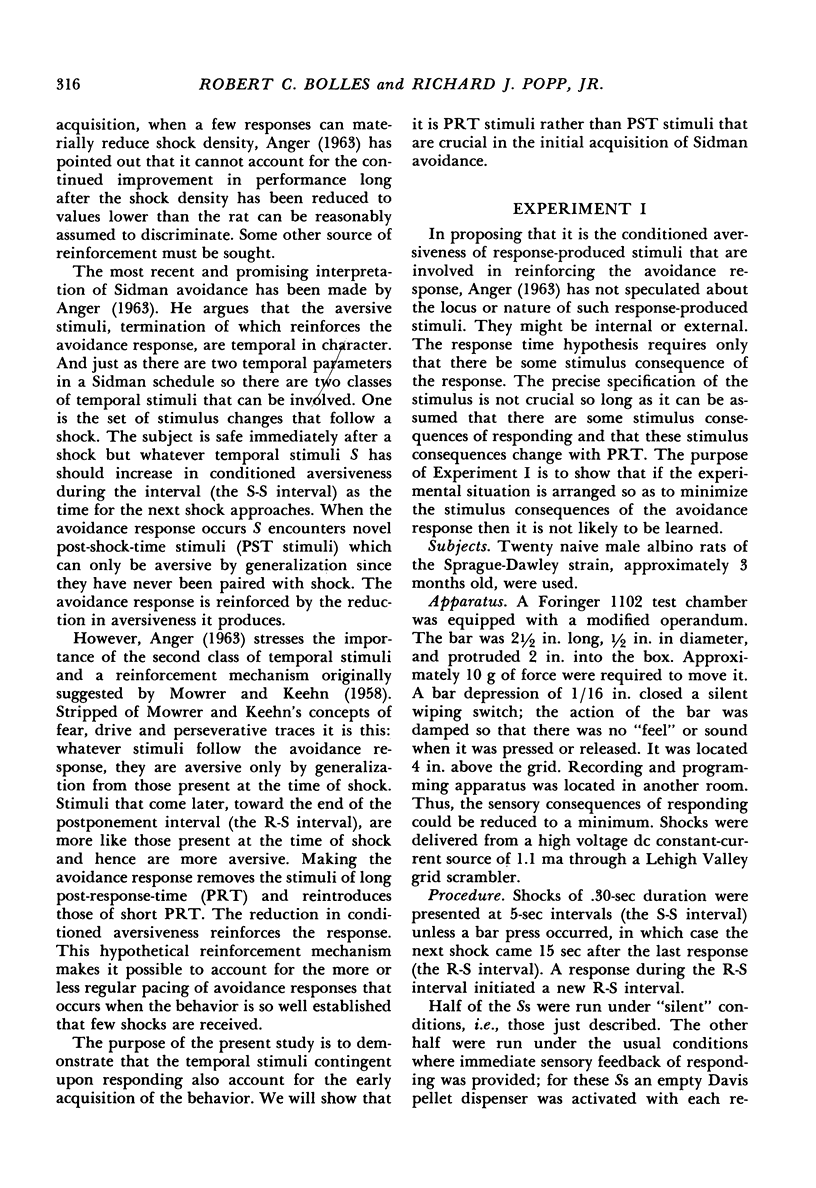
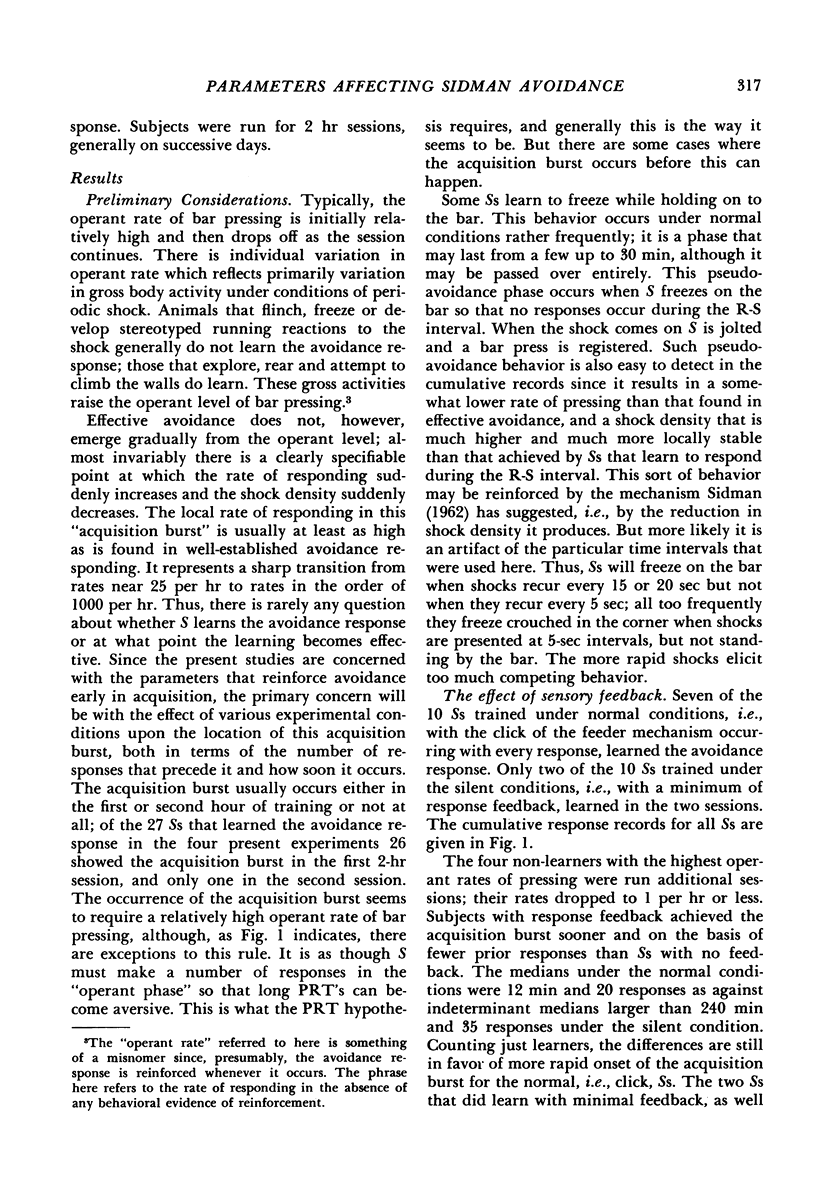
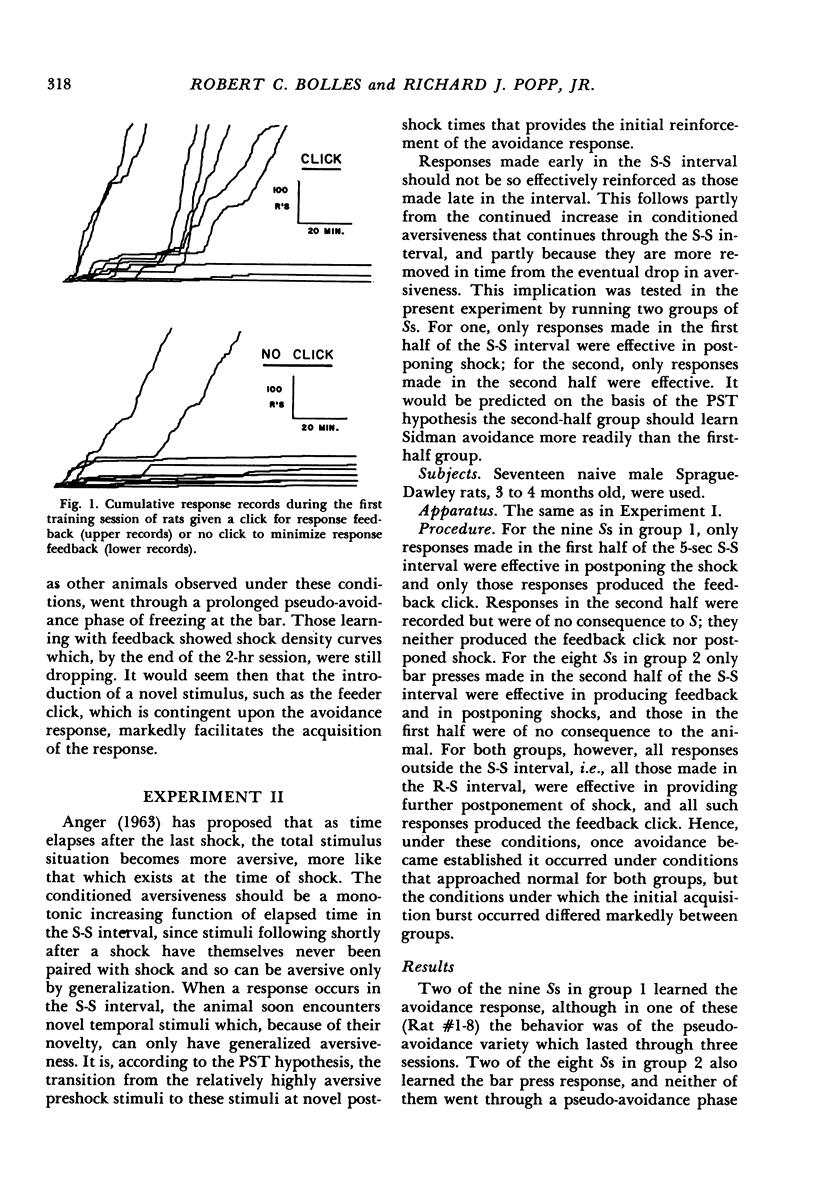

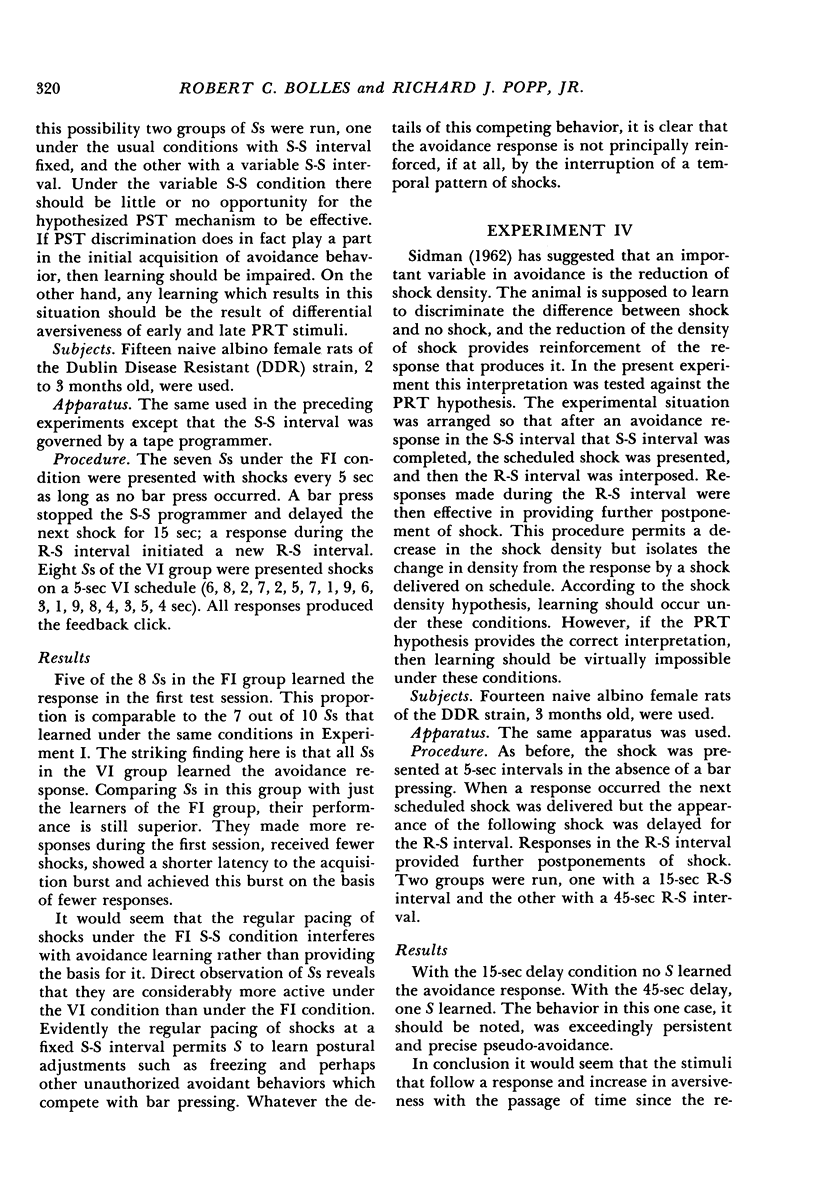
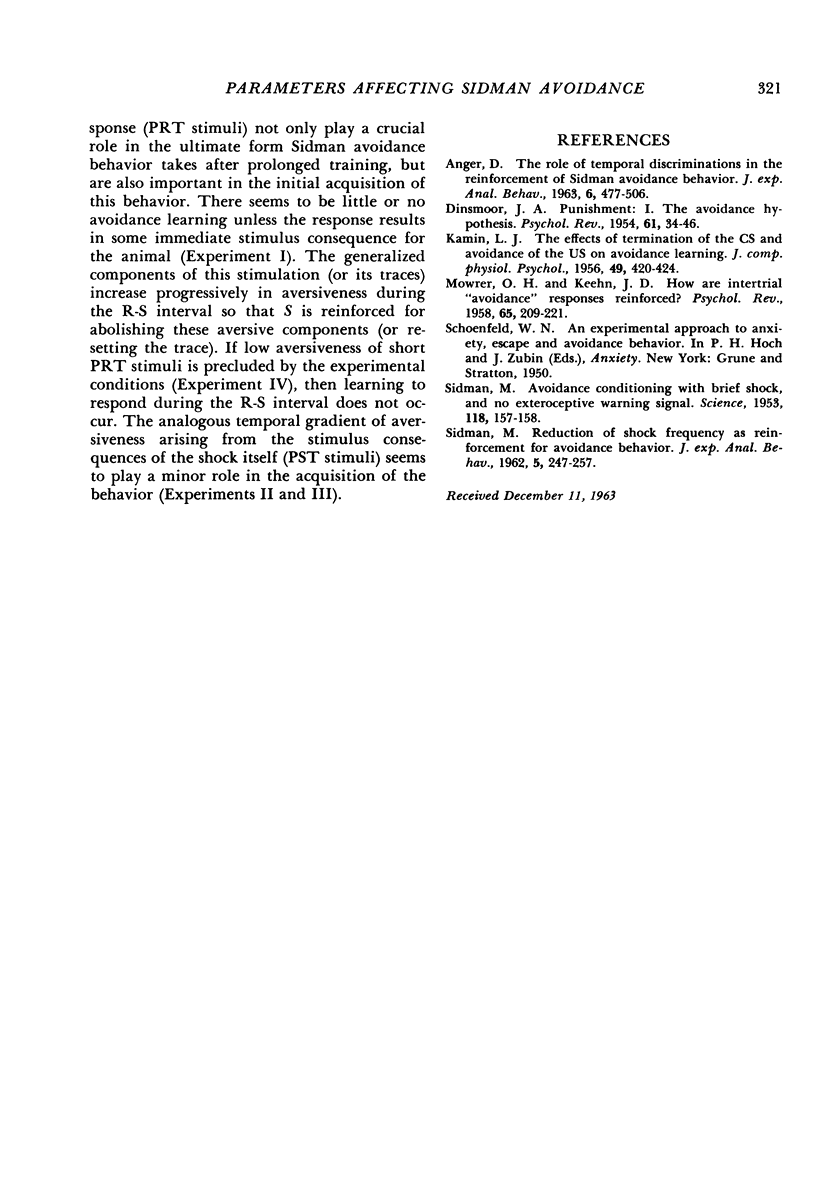
Selected References
These references are in PubMed. This may not be the complete list of references from this article.
- ANGER D. The role of temporal discriminations in the reinforcement of Sidman avoidance behavior. J Exp Anal Behav. 1963 Jul;6(3):477–506. doi: 10.1901/jeab.1963.6-s477. [DOI] [PMC free article] [PubMed] [Google Scholar]
- DINSMOOR J. A. Punishment. I. The avoidance hypothesis. Psychol Rev. 1954 Jan;61(1):34–46. doi: 10.1037/h0062725. [DOI] [PubMed] [Google Scholar]
- KAMIN L. J. The effects of termination of the CS and avoidance of the US on avoidance learning. J Comp Physiol Psychol. 1956 Aug;49(4):420–424. doi: 10.1037/h0088011. [DOI] [PubMed] [Google Scholar]
- MOWRER O. H., KEEHN J. D. How are intertrial avoidance responses reinforced? Psychol Rev. 1958 Jul;65(4):209–221. doi: 10.1037/h0047079. [DOI] [PubMed] [Google Scholar]
- SIDMAN M. Avoidance conditioning with brief shock and no exteroceptive warning signal. Science. 1953 Aug 7;118(3058):157–158. doi: 10.1126/science.118.3058.157. [DOI] [PubMed] [Google Scholar]
- SIDMAN M. Reduction of shock frequency as reinforcement for avoidance behavior. J Exp Anal Behav. 1962 Apr;5:247–257. doi: 10.1901/jeab.1962.5-247. [DOI] [PMC free article] [PubMed] [Google Scholar]


